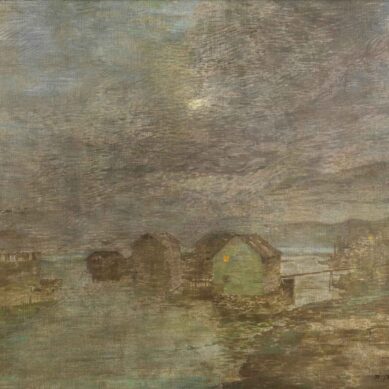You searched
Sculptor
Felice Tosalli
Are you interested in the sales or the purchase of his artworks?
We buy works of this artist
and of other painters and sculptors from the 16th century to the first half of the 20th century
The Berardi gallery offers a free and without obligation service for evaluation of ancient and modern art . To find your way in the art market, very complex and full of nuances, it is better to rely on a professional consultant who can answer fast and concretely to your needs. The clarity of the answers will resolve effectively the need to estimate or sell an asset.
Contact us immediately without commitment
Answers also in 24 hours:
Felice Tosalli
Felice Tosalli
Tosalli was born in Turin in 1883 and received his early training at his father’s carpenter’s workshop, where he began sculpting animals and sacred small statues made of wood. From 1897 to 1900 he successfully attended the Royal Albertine Academy of Fine Arts and opened his own workshop before leaving for Paris in 1904. During his stay in Paris, which was fundamental for his technical training, he worked in a restoration workshop and regularly visited the Jardin des Plantes, the zoo, and the natural history museum – the place that inspired the plaster cast of a lioness head that he would take with him on his return to Turin in 1907, and that would be kept in his studio for the rest of his life. In 1909, he made his debut at the LXVIII Esposizione della Società Promotrice di Belle Arti in Turin with the plaster Elk. In the 1910s however, he mainly worked as a graphic designer, as an illustrator for fashion and advertising, as a poster artist for the cinema, and as a lithographer at the Doyen Lithography – an activity that he continued in parallel with sculpture until the mid-1930s. In 1911, he married painter Pia Galli. After serving as a Red Cross corporal during the First World War, they moved to Revigliasco in 1919 and had a daughter, Elisa.
He joined the Circolo degli Artisti of Turin in 1920 and participated in the annual exhibitions for a decade. Encouraged by his wife, he started sculpting wood again creating mythological and, most of all, animalier subjects. The exhibitions of the early 1920s in Milan, Rome and Florence were a great success with the critics. He gained the attention of the most important collectors and had important commissions. According to a long article published on “La Stampa” in 1924 “Tosalli has a real passion for animals” and “if you look at the animals he creates, the figures take second place. Tosalli’s animals are genuine creations. Only those who – like him – have devoted themselves to studying the habits, the lives of beasts, and have come to know them as closely as a zoologist does, can reproduce an attitude, a movement, an expression that characterises the species” (Pavia 1924). After working for a collector from 1923 to 1927, he began teaching sculpture to Princess Bona of Bavaria in 1927. In 1928 he was commissioned by her brother, Filiberto of Savoy, a Roman charioteer as a gift for Mussolini – which the sculptor personally delivered. That same year, he started creating ceramic animals for the Turin factory Lenci.
The collaboration continued until the mid-1930s and was followed by other collaborations with Rosenthal & C. and Ceramiche d’Arte Campionesi. The 1935 personal exhibition at the Sala d’Arte Lombardi – which in the 1937 edition only displayed drawings – was a great success, especially the animals, in which his contemporaries recognised the sculptor’s originality. The Eider (1925), the Maki Vari and the Lion Cubs (1935) – coming from the artist’s heirs – demonstrate his extraordinary skills, together with the works he executed in the mid-1930s based on Kipling’s The Jungle Book: Baloo, The Challenge to Shere Khan and The Song of Mowgli. In 1939 he was commissioned by architect Antonio Barluzzi eight candlesticks and two bronze crucifixes for the upper church of the Franciscan Church of the Visitation in Jerusalem. After moving to Cavoretto in 1945, Tosalli suffered a heart attack in 1949. Forced to give up sculpting wood, he continued modelling terracotta works, painting in oils, drawing and giving sculpture lessons (his pupils were Ines Minina Pignoni, Paola Bondon and Maria Luisa Perroncino). The Osella Triumph, a group of two bronze marmots dedicated to the memory of Giuseppe Osella – who was shot by the fascists – is his last documented work. Tosalli died in 1958.
Alessandra Imbellone





